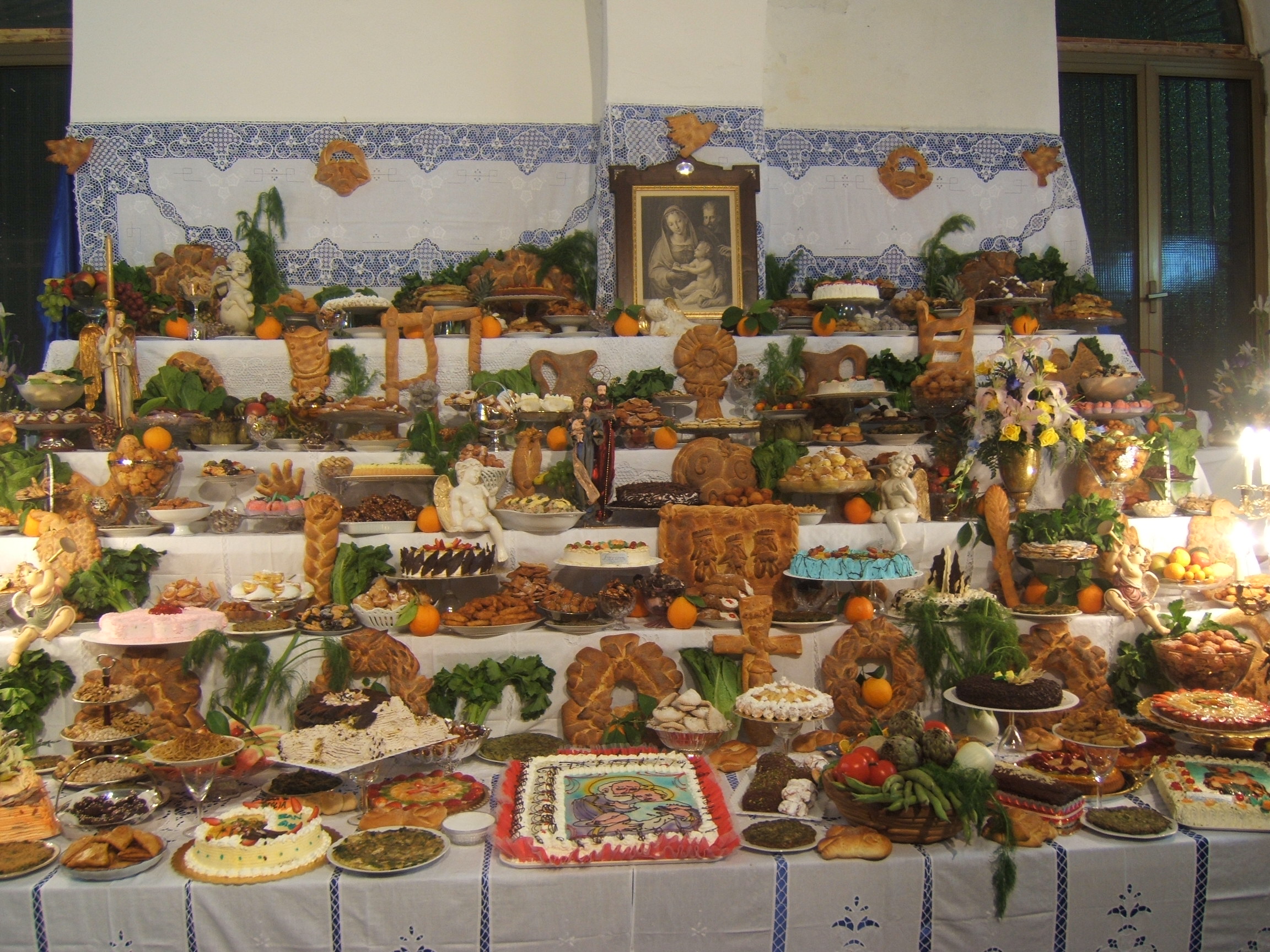Mother Mary is ubiquitous in Italy, considering the many churches and traditions revolving around her. Her humble, carpenter husband can be forgotten behind his popular wife and (literally) godly foster child. While churchgoers flock to mass to praise Jesus and Mary every Sunday, Sicilians have carved out a special tradition for Saint Joseph in late March called the “Tavolate di San Giuseppe”.
Beginning March 19, Sicilian communities celebrate Saint Joseph by preparing tables with grand pictures, bountiful food, and other items like intricately woven bread that represent their devotion to the saint.
The mid-Lenten tradition usually lasts a few days, and all are welcome to partake. Celebrations vary from city to city. In Palermo, they parade a statue of St. Joseph around the city in a grand procession. Citizens in Agrigento adorn a 10-foot high tower with laurel branches.
Different stories have emerged about the origins of the “Tavolate di San Giuseppe”, but a popular one started in the Middle Ages during a severe drought in Sicily. Many people died and crops suffered as famine spread throughout the area. The peasants prayed to God for relief and to send some rain, and they asked St. Joseph to intercede on their behalf. When the rain arrived and crops were restored, the people celebrated with a harvest in which they prepared grand feasts and put their crops together on the “Tavola di San Giuseppe”.
Since then, Sicilians have used the festivity to show their appreciation for answering their prayers. These prayers traditionally cannot be requests for personal gain or benefit. Many people prayed to St. Joseph for the safe return of a loved one from war, especially during World War II. Others pray for a loved one to be cured of illness.
Tables are decorated with precious lace, sheets, and images of St. Joseph. A replica of him is usually placed in the middle of the table to signify his importance. Next comes the bread. The popular bread tradition usually depicts common items, like baskets, crosses, cane, fish, snail, artichoke, sheaf of wheat etc. The bread can also be elaborate and imaginative, giving freedom to people to shape their bread however they please.
Many Sicilians have brought the festivity to the United States. In Hawthorne, New Jersey, for example, there are many immigrants from San Croce Camerina, Sicily, who have lived in the US for a while. Many of them are WWII veterans who arrived to the US by boat.
Each year, the New Jerseyans bake pastries and fill a 400 square foot table and form a procession with a statue of St. Joseph that leads to Sunday Mass. They fill the table with traditional foods like homemade ricotta, zeppoli, spinach pie, wine, and homemade bread. The “Tavolate di San Giuseppe” provides an essential link to their home, religion, and family. Many of the older folks enjoy speaking in their Sicilian dialect and sharing their heritage with the younger generation.
The “Tavolate di San Giuseppe” are present in Los Angeles as well, with celebrations typically hosted by churches. The Mary Star of the Sea Church in San Pedro celebrates annually with a special Mass, a St. Joseph procession, followed by children dressed in Italian costumes, a marching band, and a banquet to which many guests are invited.
The food includes braided breads, stuffed cauliflower, cardoons, zucchini eggplant, and peppers. They arrange fruits in cornucopia baskets symbolizing the plenty of the feast. Since the celebration falls during Lent, fish dishes are prominent. Like their Sicilian counterparts, participants enjoy being creative with their bread and designing it into fancy shapes like stars, flowers, and birds.
Sicilian sweets like persiche (cream-filled pastries look like peaches), cassadini (sweet ravioli), and cannoli, are laid out on the tables for guests.
Whether the festival takes place in Palermo or New Jersey, Sicilians and non-Sicilians alike carry on the generous, thankful spirit of the “Tavolate di San Giuseppe” thanks to this age-old tradition.





























